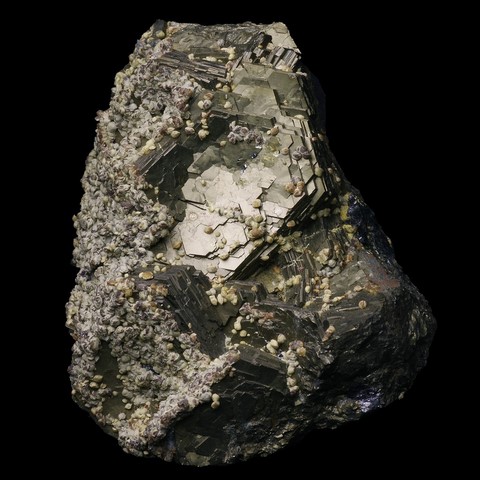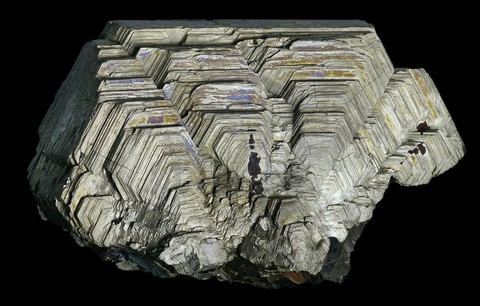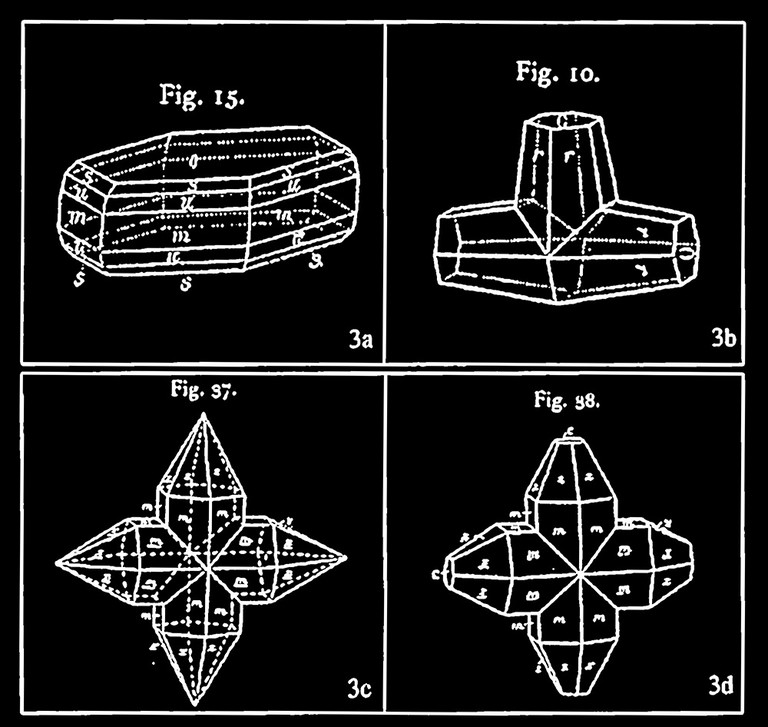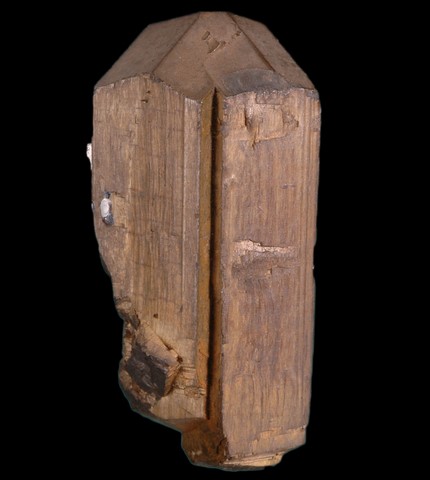PYRRHOTITE
Class : Sulfides and sulfosalts
Subclass : Sulphides
Crystal system : Monoclinic
Chemistry : FeS
Rarity : Quite common
Pyrrhotite is an hydrothermal mineral common to metal deposits formed at high temperatures. It is a mineral that owes its name to the Greek purrotes (reddish) in reference to its color. Pyrrhotite occurs mainly in skarns (associated with magnetite, wollastonite, sphalerite, chalcopyrite, scheelite, grossular, etc...), in deposits related to basic and ultra-basic rocks (with chalcopyrite, pentlandite, linneite, millerite, platinoids, etc...) and in some sulfidic masses. It is an unstable sulphide under surface conditions and is often a pyrite-marcasite pseudomorh. Pyrrhotite has a metallic luster and a yellow-bronze color with a red or pinkish iridescence, which is frequently expressed by exposure to the air. It occurs in cleavable to granular masses or tabular pseudohexagonal crystals sometimes arranged in rosettes. It is one of the rare magnetic minerals, attractable to the magnet, the intensity of magnetism being inversely proportional to the iron concentration. Pyrrhotite is rare in aesthetic crystallization which makes it a sought-after mineral for collectors, it is also a mineral mainly extracted for the copper, nickel and occasionally platinum minerals it hosts. Pyrrhotite contains only exceptionally enough nickel to form an ore. It was very locally a source of sulfur (Ontario, Canada).
Pyrrhotite in the World
Pyrrhotite in France
In France crystals of 5 cm were extracted from the Brittany mine of Pontpéan (Ille-et-Vilaine), crystals completely transformed into limonite (up to 4 cm) were also reported to the Combe de la Selle in Isère department.
Twinning and special forms
New 2009 twinning
Fakes and scams
No fake known for this species.
Hardness : 3.5 to 4
Density : 4.58 to 4.65
Fracture : Sub-conchoidal
Streak : Gray
TP : Opaque
IR : Not measurable
Birefringence : Not measurable
Optical character : -
Pleochroism : None
Fluorescence : None
Solubility : Hydrochloric acid
Magnetism : Ferromagnetic
Radioactivity : None




